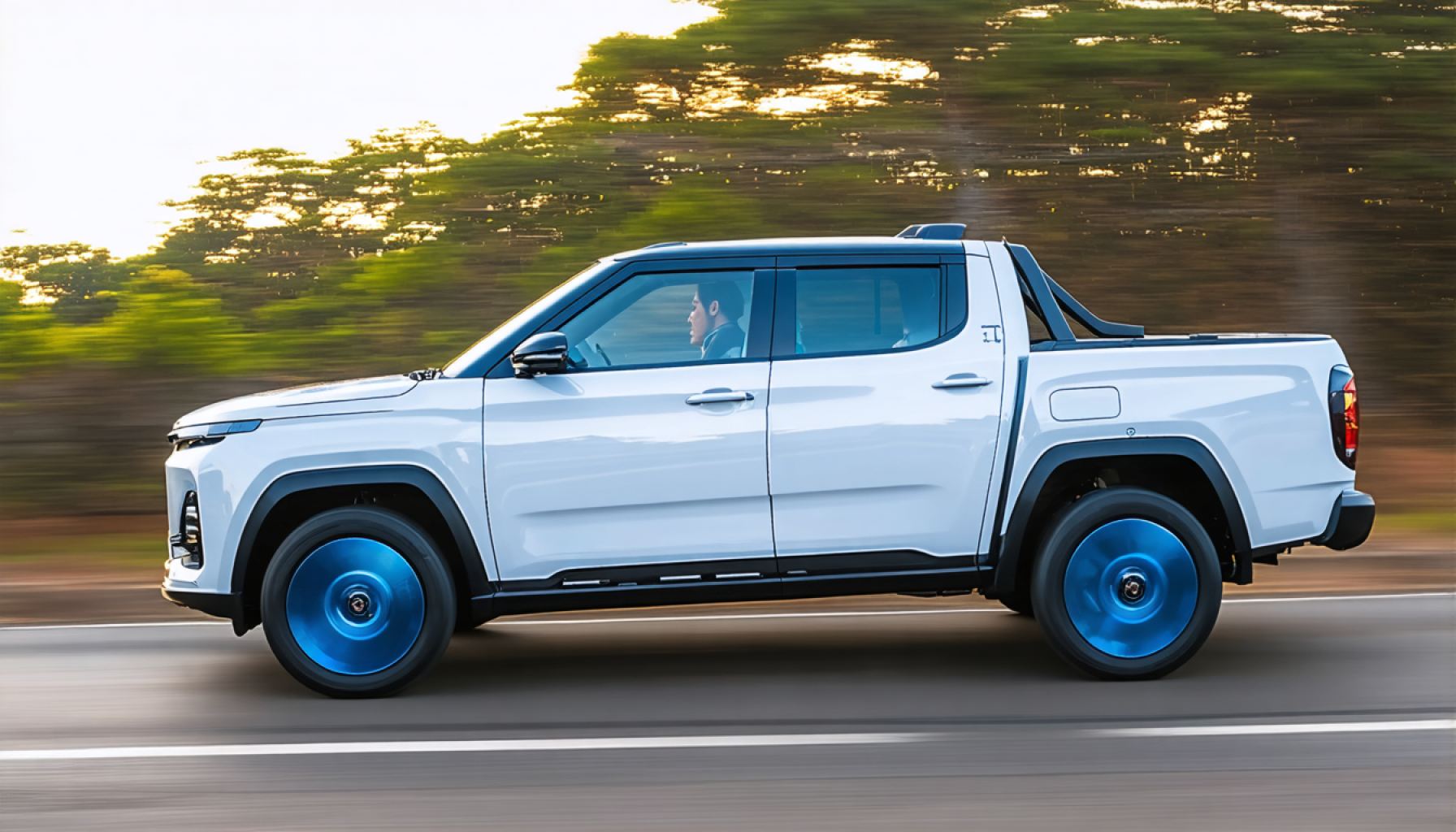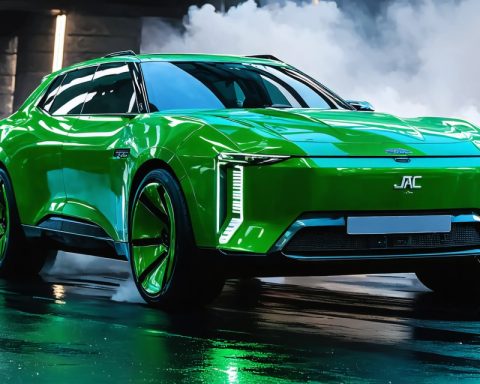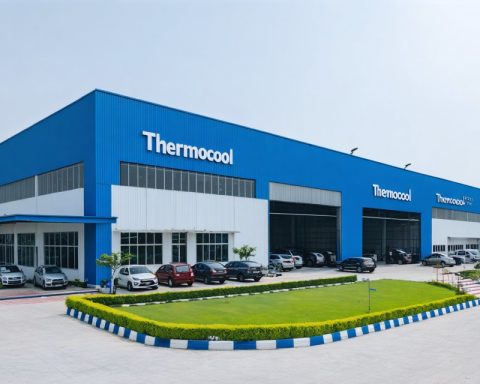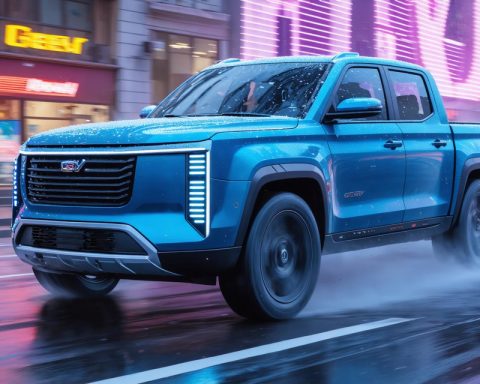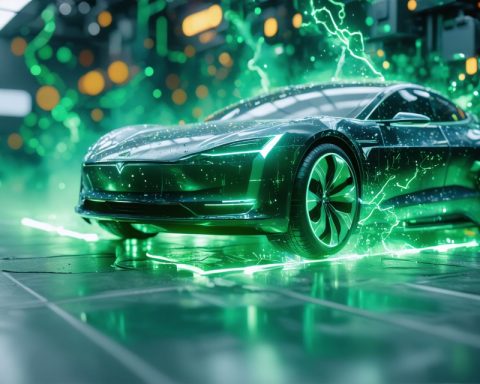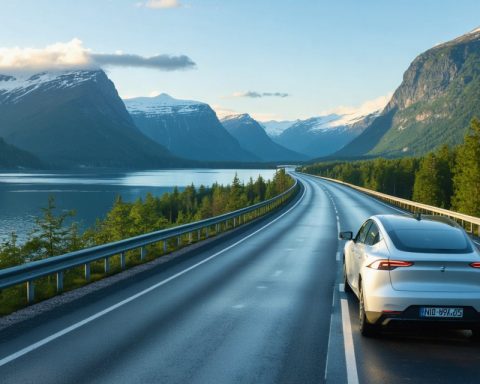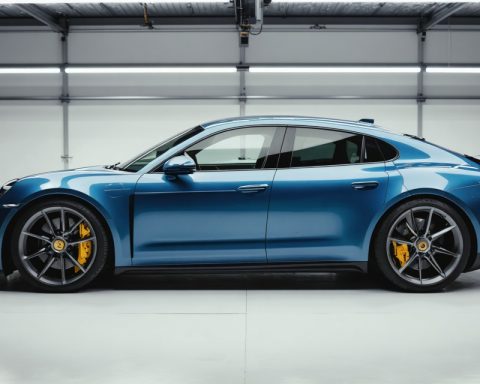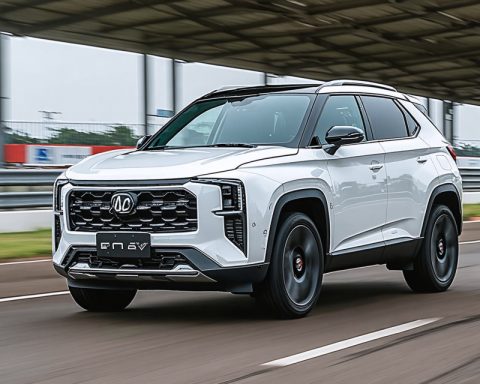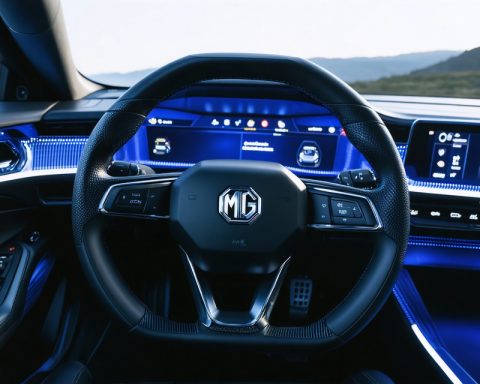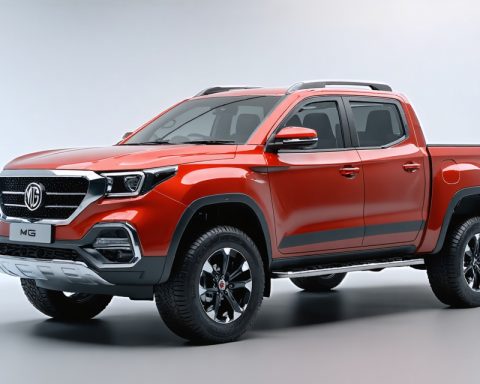- Geely is entering the Australian ute market with the Riddara, a plug-in hybrid vehicle aimed at balancing innovation and sustainability.
- The Riddara, known as Radar RD6 in China, combines traditional ute practicality with environmental benefits through electrification.
- The PHEV powertrain of the Riddara offers versatile capabilities, providing electric drive for city use and gasoline backup for longer journeys, appealing to traditional ute enthusiasts.
- Geely’s entry comes amidst rising competition from industry giants like BYD and Ford, reflecting a shift in the market dynamics towards electrified vehicles.
- Challenges include infrastructure limitations and consumer education, particularly in rural areas, where PHEVs can mitigate range anxiety concerns.
- Geely plans to expand its lineup, potentially challenging major players like Ford Ranger and Toyota HiLux in Australia’s ever-popular ute segment.
Not unlike the fearless explorers of Australia’s storied past, Geely is poised to navigate the vast, rugged terrain of the Australian ute market, its compass set firmly on innovation and sustainability. At the heart of its strategy is the Riddara pick-up truck, not just a vehicle but a bold statement of intent—a plug-in hybrid version ready to carve its niche and challenge the status quo.
Australia, long synonymous with the roar of diesel engines and the durability of utes that can brave any landscape, might soon hear a quieter, yet equally powerful, hum. Imagine a vehicle that combines the robust practicality of a traditional ute with the environmental consciousness of electrification. This is the emerging narrative as Geely’s Riddara, known as Radar RD6 in China, prepares to make its electrified debut down under.
Powertrain Revolution
The introduction of the Riddara equipped with a PHEV powertrain tailored to Australian needs could dramatically shift consumer perceptions. Traditional EV utes have passed over many Aussie buyers like rain over the Outback—momentarily refreshing but not conducive to long-term change. The key lies in the inherent versatility of PHEVs, bridging the gap between present capability and future aspiration. The prospect of a vehicle that offers both an electric drive for city cruising and petrol backup for extended adventures could tempt even the most devout diesel devotees.
Market Dynamics and Competitive Strides
With industry giants like BYD and Ford strategizing their own PHEV launches, Geely’s Riddara is set to enter a burgeoning battleground. The market thirsts for change, and the timing couldn’t be better—Australia’s appetite for utes remains insatiable, with nearly one in every five new cars being a member of this venerable vehicle class.
Li Lei, Geely Australia’s CEO, embodies both the excitement and the strategic caution needed for such a mission. While precise timelines remain shrouded in mystery, the direction is clear: a lineup expansion could see Geely release larger utes aimed directly at challenging the likes of the Ford Ranger and Toyota HiLux. Such an offering in Australia would realign consumer choices, leveraging technology to meet both function and sustainability needs.
Challenges and Opportunities
The Riddara’s journey through Australia’s vast expanses presents more than just a test of market dynamics—it represents a tussle with infrastructure challenges and consumer education. Rural areas in particular pose a range anxiety hurdle that hybrid technology can cleverly sidestep. A longer range—with the option for quick refueling—may indeed prove a persuasive argument for skeptics.
As the Riddara creeps further into view, it does so against a backdrop of a rapidly evolving automotive landscape. Geely’s pledge to bring additional utes should electrify Australia’s automotive enthusiasts, analysts, and environmental proponents alike.
In this landscape shaped by vast distances and deep connection to the land, the launch of Geely’s PHEV Riddara stands not as a mere introduction of a new vehicle but rather a paradigm shift. One can almost hear the hushed excitement—the click of seatbelts, the anticipation of a smoother, cleaner ride. Australia’s roads await, ready to embrace the future driven by progressive ideas and an urgency to act wisely for tomorrow.
Is Geely Set to Transform Australia’s Ute Landscape With the Riddara?
The Revolution of the Powertrain
Geely’s introduction of the Riddara pick-up truck with a plug-in hybrid electric vehicle (PHEV) powertrain has the potential to significantly alter the Australian ute market. The Riddara, also known as the Radar RD6 in China, is designed to meet the unique demands of Australian consumers, offering a blend of electric drive for city commutes and petrol backup for longer journeys. This dual capability could attract traditional diesel enthusiasts by providing the utility and range of combustion engines while promoting sustainable practices.
Understanding the Ute Market Dynamics
The Australian ute segment is fiercely competitive, with Ford’s Ranger and Toyota’s HiLux traditionally dominating the market. However, there’s a growing interest in electrified vehicles, driven by both environmental concerns and evolving consumer preferences. With more than 20% of new car sales being utes, there’s ample opportunity for new players like Geely to capture market share, especially as the demand for sustainable alternatives increases.
Challenges in Infrastructure and Consumer Awareness
One of the chief challenges facing Geely’s Riddara is the infrastructure needed to support PHEVs, particularly in rural areas where range anxiety can be a concern. However, the hybrid configuration of the Riddara, which allows for quick refueling, could mitigate these concerns and appeal to consumers who value convenience and reliability. Geely must also focus on educating consumers about the benefits of PHEVs to facilitate a smoother transition from traditional utes.
Comparisons with Market Giants
While the Ford Ranger and Toyota HiLux have set the standard for toughness and reliability, the Riddara could offer a viable alternative with its focus on sustainability and technology. Comparisons between these vehicles will hinge on features such as towing capacity, off-road capabilities, and total cost of ownership, all areas where the Riddara could excel, particularly in urban settings where environmental regulations are more stringent.
Sustainability and Future Trends in the Automotive Industry
As the automotive industry trends toward sustainability, companies like Geely are strategically positioned to take the lead. The integration of PHEVs and EVs is expected to increase, driven by regulatory pressures and consumer demand for eco-friendly solutions. Analysts predict continuous growth in the market share of electric and hybrid vehicles as infrastructure develops and battery technologies improve.
Insights and Actionable Recommendations
1. Stay Informed: Fleet managers and consumers alike should keep up with the latest PHEV models to better understand their features and advantages.
2. Consider Total Cost of Ownership: Evaluate the long-term savings of PHEVs, including incentives, maintenance, and fuel costs, against traditional combustion vehicles.
3. Leverage Government Incentives: Explore government subsidies and incentives for purchasing hybrid vehicles, which can significantly offset initial costs.
4. Embrace Infrastructure Development: Support initiatives and invest in infrastructure development, including charging stations, to ensure seamless travel across urban and rural areas.
5. Evaluate Technology Advancements: Stay updated on technological advancements in battery life and charging speed, which could enhance the practicality of PHEVs.
For more on the innovative strides in electric and hybrid vehicles, visit Geely.
In conclusion, Geely’s Riddara PHEV represents a seismic shift in the Australian ute market, combining the rugged utility of traditional vehicles with the sustainability of modern technology, a balance crucial to future automotive development.
